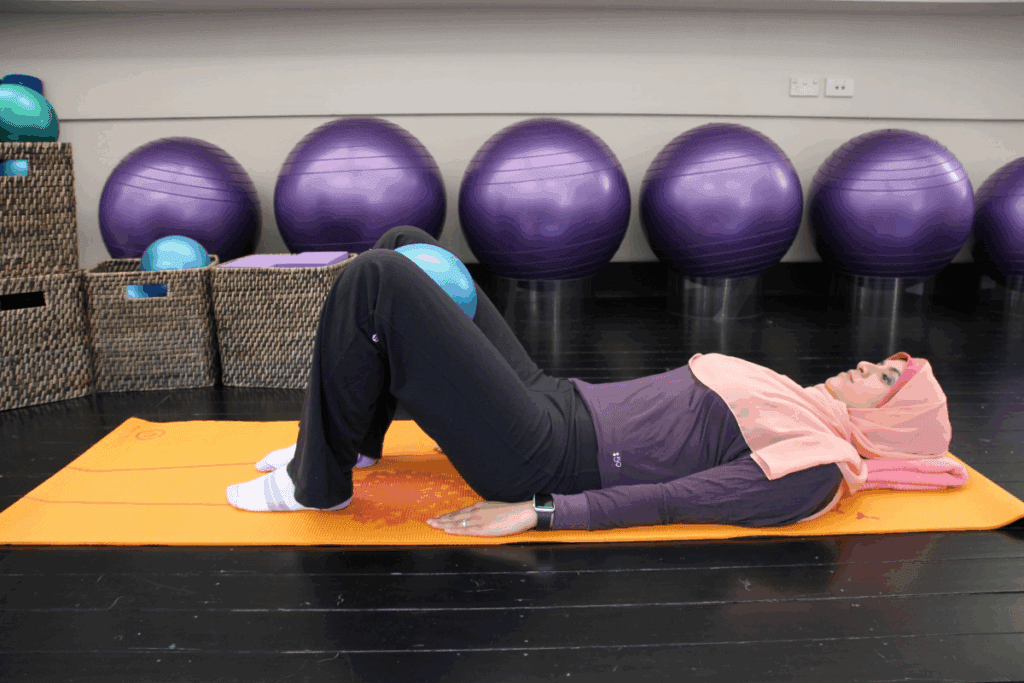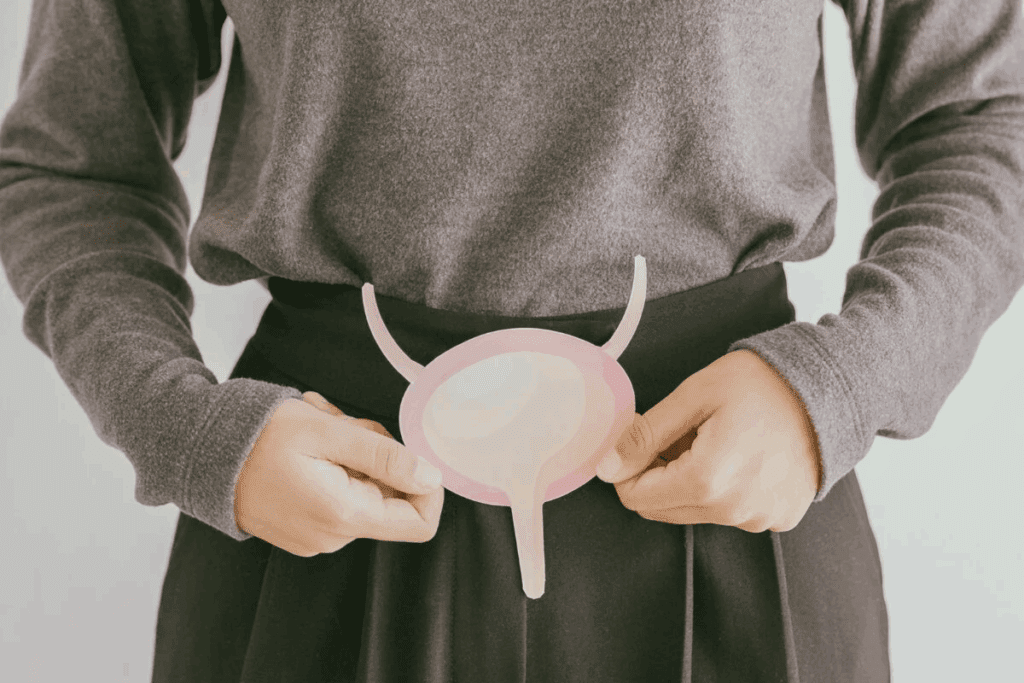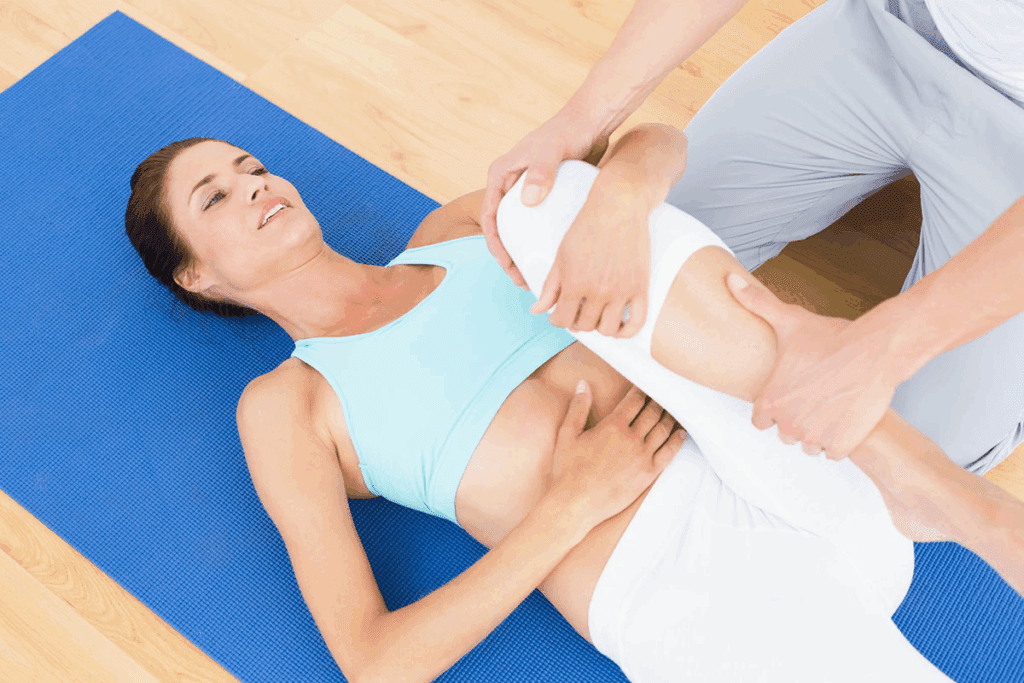Last Updated on November 25, 2025 by Ugurkan Demir

Millions of people face overactive bladder symptoms every day. These symptoms can really affect their lives. But, there’s a simple way to help. Pelvic floor exercises have been shown to cut down bladder urgency and frequency by more than 60%. Use pelvic floor exercises for OAB (Overactive Bladder) to strengthen your bladder muscles, reduce urgency, and improve overall bladder health.
At Liv Hospital, we focus on you and your health. We use proven treatments like pelvic floor exercises. These exercises help strengthen the pelvic floor muscles. This can greatly improve bladder control and your overall life quality.

It’s important to understand Overactive Bladder to manage its effects on daily life. OAB affects many adults, causing symptoms that can be upsetting and disrupt routines.
Overactive Bladder is when you suddenly need to urinate without control, sometimes leaking urine. Studies show 16% of adults in the United States have OAB, with more cases as people get older.
This condition isn’t just a sign of aging. It can be caused by many things, like neurological issues or bladder problems.
OAB symptoms can really affect your life, causing:
These symptoms can make you feel anxious, lonely, and less productive. They affect not just you but also your loved ones and caregivers.
Several things can lead to OAB, including:
Knowing what causes OAB is key to finding ways to manage it. This includes pelvic floor exercises for overactive bladder and treatments to strengthen the muscles around the bladder.

Pelvic floor exercises help manage Overactive Bladder (OAB) by working with the pelvic floor muscles and bladder. These exercises involve tightening and relaxing muscles that support the bladder and control when you pee.
The pelvic floor muscles are at the base of the pelvis. They support the bladder, uterus, and bowel. These muscles are key in controlling when you pee. The bladder stores urine, and its work is tied to the pelvic floor muscles.
If these muscles are weak, it can cause problems like leaking urine and other OAB symptoms.
The pelvic floor muscles, like the pubococcygeus, surround the urethra. They help control urine flow. Doing Kegel exercises strengthens these muscles, helping you hold urine longer and go less often.
Research shows that PFMT works by contracting muscles that stop the bladder from contracting too much. This helps improve bladder control.
Clinical Evidence of Effectiveness
Many studies prove that PFMT is a good treatment for OAB. Clinical trials show that regular pelvic floor exercises can lessen symptoms like urgency, frequency, and incontinence. This makes PFMT a valuable part of managing OAB, without the need for surgery.
To do pelvic floor exercises right, you need to find the right muscles. These muscles help support your bladder and control when you pee. Knowing where these muscles are is key to exercises for overactive bladder.
One way to find your pelvic floor muscles is to stop your urine flow midstream. This shows you’re using the right muscles. But, don’t do this often because it might not empty your bladder fully. Another trick is to try to stop gas from passing; the muscles you squeeze are in your pelvic floor.
Also, try lying down with your knees up and feet on the floor. Put a finger in your vagina (for women) or rectum (for men). Squeeze the muscles around your finger. You should feel a gentle squeeze if you’re doing it right.
It’s easy to mix up pelvic floor muscles with other muscles like your abs or butt. To avoid this, squeeze the muscles without tightening your abs or butt. Practice this while lying down to focus on the pelvic floor muscles alone.
After finding your pelvic floor muscles, check their strength. Lie on your back with knees bent and try to lift your pelvic floor without holding your breath. If it’s easy and you can hold for a few seconds, your muscles are strong. If it’s hard, your muscles might need more work.
Checking your muscle strength regularly helps you see how well you’re doing with exercises for overactive bladder. Remember, building strong pelvic floor muscles takes time and regular practice.
Kegel exercises are key for pelvic floor muscle training. They help improve bladder control. For those with overactive bladder (OAB), these exercises can greatly improve symptoms and life quality.
To start a basic Kegel exercise, find your pelvic floor muscles. These are the muscles that stop urine flow. Contract these muscles, hold for five seconds, and then release. It’s important to squeeze the right muscles to avoid straining others.
Proper breathing and posture are key during Kegel exercises. Deep, controlled breathing helps relax and focus. Also, keep good posture to avoid straining your pelvic floor muscles.
When starting Kegel exercises, it’s easy to make mistakes. Avoid holding your breath or straining other muscles. This can cause fatigue and reduce exercise benefits. Also, be patient with progress, as it may take time to see improvements.
By avoiding these common mistakes, you can do Kegel exercises correctly and safely.
After mastering basic pelvic floor exercises, it’s time to try more advanced techniques. These methods can enhance bladder control and improve pelvic health.
Progressive resistance training strengthens muscles by increasing exercise intensity. For pelvic floor muscles, Kegel exercisers or vaginal cones are used. They help track progress and challenge the muscles.
To start, pick the right device and resistance level. As your muscles get stronger, increase the resistance. This keeps improving muscle strength and endurance.
Advanced exercises include longer holds and quick flicks. Longer holds improve muscle endurance by holding contractions for 10 seconds or more. Quick flicks enhance muscle reaction speed with rapid contractions.
To add these, start with longer holds and increase as you get stronger. For quick flicks, do rapid contractions and releases. Start with a few reps and add more as you get better.
Biofeedback and assistive devices boost pelvic floor exercise effectiveness. Biofeedback devices show muscle activity in real-time. They’re great for those who find it hard to engage the right muscles.
Assistive devices, like pelvic floor trainers or electrical stimulation units, are also helpful. They should be used with a healthcare professional’s guidance. Always talk to a healthcare provider before starting new exercises or devices.
A well-planned pelvic floor exercise routine can greatly improve bladder control and quality of life. It’s key to know what makes a routine effective.
For the best results, do pelvic floor exercises 3 sets a day. Each set should have 10 reps. Start slow and increase as your muscles get stronger.
Start with short holds and breaks, then make them longer. This helps improve bladder control a lot.
Keeping track of your progress is important. Use a simple log to note your exercises and any symptom changes.
Setting achievable goals is also key. Aim for small improvements, like holding urine longer or leaking less. Celebrate these small wins.
To keep up with your routine, add exercises to your daily tasks. Do them while brushing teeth, during TV breaks, or in line.
Consistency is the goal. By making these exercises part of your daily routine, you’ll see better results. It’s about making them a habit for better bladder control and health.
By sticking to these tips and a consistent routine, you can boost your bladder strength. Over time, you’ll see improvements in your symptoms. Stay committed for lasting results.
Pelvic floor exercises can be adjusted for various groups, helping everyone with Overactive Bladder. This flexibility is key because different life stages and health conditions need special care.
Women, including those postpartum, greatly benefit from pelvic floor exercises. Postpartum women often have weaker pelvic muscles due to childbirth. Modified Kegels can help, focusing on gentle strengthening.
Women should first find the right muscles and start with easy exercises. Then, they can gradually make them harder. Using breathing techniques and good posture can make these exercises more effective.
Men with Overactive Bladder can also benefit from pelvic floor exercises. It’s important to focus on exercises that strengthen the muscles without straining the bladder. Quick flicks and long holds are good options.
Men should learn the right technique to avoid mistakes. Getting help from a healthcare professional can provide personalized advice.
For the elderly or those with limited mobility, pelvic floor exercises must be adjusted. Seated or lying down positions make these exercises easier to do.
These modifications might include slower movements and fewer reps. It’s important to focus on proper technique. Using assistive devices or a physical therapist can also help.
By tailoring pelvic floor exercises for different groups, we ensure everyone can strengthen their bladder muscles. This is true regardless of age, gender, or physical ability.
Managing overactive bladder needs more than just exercises. Making lifestyle changes can also help a lot. By changing your diet, staying hydrated, and being active, you can improve your bladder health.
What you eat affects your bladder. Some foods can make symptoms worse. Try to avoid:
On the other hand, some foods are good for your bladder. These include:
Drinking water is key, but too much can be bad. Here’s what to do:
Being active helps your bladder too. It keeps you healthy and reduces pressure on your bladder. Try:
Here’s a quick look at how these changes can help:
| Lifestyle Change | Benefit |
| Dietary modifications | Reduces bladder irritation |
| Hydration strategies | Manages fluid intake, reducing bladder pressure |
| Physical activity | Improves overall health, reduces bladder pressure |
Adding these lifestyle changes to your pelvic floor exercises can lead to better bladder control. It can also make your life better overall.
Bladder training is a great way to help manage overactive bladder, along with pelvic floor exercises. By adding bladder training to your daily routine, you can better control your bladder. This can also reduce feelings of urgency and needing to go too often.
Scheduled voiding means going to the bathroom at set times to avoid a full bladder. This method helps your bladder hold urine longer. Urge suppression is also key, where you delay going to the bathroom until your scheduled time.
To do scheduled voiding well:
For urge suppression, try:
A bladder diary is a key tool in bladder training. It tracks your fluid intake, bathroom visits, and any leaks or urgency.
To keep a good bladder diary:
Looking at your diary can show patterns and what might trigger issues. This lets you tweak your training plan to fit your needs.
Progressive timing means slowly increasing the time between bathroom visits. This helps your bladder hold more and go less often. Tailor this to your comfort and needs.
To use progressive timing:
Combining these bladder training methods with pelvic floor exercises can greatly improve bladder control. This can also enhance your overall quality of life.
Knowing when to see a doctor is key to managing Overactive Bladder. Pelvic floor exercises and lifestyle changes can help a lot. But sometimes, you need a doctor to make sure you get the right treatment.
If you have sudden, severe urgency or pee more than 8 times a day, see a doctor. Waking up to pee a lot at night or leaking urine also means it’s time to get checked. Blood in your pee, pain while you pee, or symptoms that mess up your day are other signs to watch for.
Pelvic floor physical therapists can help with kegel exercises for overactive bladder. They teach you the right muscles to use and how to do the exercises right. They also create a plan just for you.
They’re great if you’re new to these exercises or if you’re not getting better with them.
Sometimes, you might need medicine to help with Overactive Bladder. Doctors might prescribe anticholinergics or beta-3 adrenergic agonists. These relax the bladder muscle and help with symptoms.
Other treatments might include overactive bladder kegel exercise and bladder training. In serious cases, neuromodulation therapy might be needed. A doctor will figure out the best treatment for you.
Changing your diet and how much you drink can also help. Learning to relax your bladder muscles with deep breathing or progressive muscle relaxation is good too.
To keep your bladder strong, you need to stick with pelvic floor muscle training (PFMT) and make lifestyle changes. Adding pelvic floor exercises for OAB to your daily routine can really help. This way, you can make your bladder stronger and improve your urine health.
We’ve talked about how to find and use your pelvic floor muscles. We’ve also covered ways to better control your bladder. Mixing these exercises with healthy eating, drinking enough water, and staying active can greatly improve your life.
It’s key to make PFMT a regular part of your day. With regular practice, you can keep your pelvic floor strong. This will help lessen OAB symptoms. Taking this step will help you take care of your bladder health better.
Pelvic floor exercises, also known as Kegel exercises, strengthen muscles around the bladder and urethra. They help improve bladder control and reduce OAB symptoms. This can greatly enhance your quality of life.
To find your pelvic floor muscles, try stopping urine flow mid-stream. The muscles you use are your pelvic floor muscles. You can also feel them by inserting a finger into your vagina or rectum and squeezing.
To do Kegel exercises right, sit or lie down comfortably. Then, squeeze your pelvic floor muscles for 5-10 seconds. Release for the same time. Do this 10-15 times, 3 times a day. Remember to breathe properly and keep good posture.
Yes, pelvic floor exercises can help both men and women with OAB. They are good for those with weakened pelvic floor muscles.
Improvements in OAB symptoms can take different times. Some see changes in weeks, others in months. Being consistent and using the right technique is key.
Yes, making lifestyle changes can help with OAB. Avoiding caffeine and spicy foods, staying healthy, and drinking enough water are good steps.
Yes, bladder training can help with OAB symptoms. Techniques like scheduled voiding and keeping a bladder diary can be useful.
If you have persistent or severe OAB symptoms, see a healthcare professional. They can find the cause and suggest treatments, like pelvic floor physical therapy.
To keep your bladder strong, keep doing pelvic floor exercises and make healthy lifestyle choices. Being consistent is important for lasting benefits.
Yes, there are ways to modify pelvic floor exercises for seniors or those with mobility issues. You can do exercises while seated or lying down, or use devices to help engage the muscles.
Yes, pelvic floor exercises can help with other urinary problems like stress urinary incontinence and frequent urination. Strengthening these muscles can improve bladder control and reduce symptoms.
Subscribe to our e-newsletter to stay informed about the latest innovations in the world of health and exclusive offers!